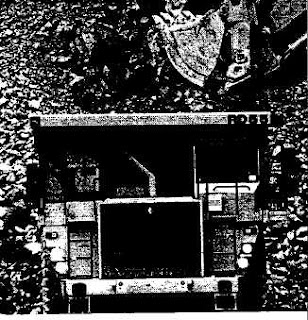Winning may be categorised as shown in the following diagram.
Winning the mineral.
Whenever mineral is mined the first step in winning the product is the preparation of the site.
The four main stages in the preparation are :
- Planning
- Surveying
- Clearance
- Laying out
The risk of injuries can be significantly reduced if sufficient regard is given to health and safety at the planning stage of a new or developing mine.Planning is the stage at which risk assessment can best be applied. Short, medium and long term planning of the mine can eliminate many hazards and contribute to a reduction in the potential for injury, in cases when the hazard cannot be eliminated.
Time taken at this stage to consider the best layout of the mine and the equipment to be used will greatly reduce the risk of accidents to persons and plant during the working life of the mine.
For example designing low gradient roads and one way travel for traffic will considerably reduce the probability of runaway and collision accidents.
The danger of being struck by large moving vehicles can largely be eliminated by using trained drivers and providing the vehicles with suitable appliances, such as aids to ensure the driver has all round visibility. The danger can be further reduced by designing and implementing one way traffic systems and ensuring that open edges of roadways are suitably protected to prevent accidental driving off the edge. Additionally, ensuring that the vehicles are properly maintained in good working condition, particularly the braking system, will go a long way to help the driver control the vehicle.
Proper regard to the elevation of conveyors (dealt with in Part 2) will help to eliminate spillage from steeply inclined belt conveyors, and remove the necessity for personnel to work at heights from which they may be liable to fall. Well-designed access and working platforms will also reduce the possibility of a fall.
Surveying.
Surveying has its hazards, for example surveyors are likely to be seriously injured if they fall from heights or are thrown out of overturning vehicles.
Since the hazards are created by ground formation it is unlikely that they can be removed. Those normally at risk would be the surveying team of the surveyor and assistants.
Individuals working at the edge of vertical faces or on very steep undulating ground are at greater risk than those working on level ground. Driving over steep rough terrain is more dangerous than driving over gentle slopes.
It is necessary to give clear positive instruction and ensure vehicles used to gain access to the areas to be surveyed are well maintained and suitable for the terrain over which access is to be gained.
Clearance
Clearance covers all the activities associated with preparing a site ready for laying out primary roads for working a face. It may include tree clearance, demolition of buildings and the removal of the top layers of earth. In some cases it may include re-routing of services, roads and waterways e.g. rivers.
Laying out
There are many different ways of starting and working mines but careful planning particularly concerning the order of laying out the mine will reduce hazards.
The hazards prevalent during the construction of new roads and buildings are mainly, overhead electricity lines, falls while working at heights, plant running out of control and individuals being struck by moving vehicles.
The construction of a small single storey building will normally create less hazards than a large high rise building. Similarly building roadways on level ground will involve less hazards than building on steeply inclined terrain.
One of the hazards to be assessed is earth moving vehicles such as bulldozers being driven off the edge of roadways under construction.
While all persons working at civil and construction works are at high risk those working at height or working with cranes, large earth moving plant and explosives will be at greater risk than those persons concerned with surveying, setting out and conveying supplies to the primary workers or those working at ground level.
While the potential for risk of serious injury is high during civil and building operations the risk of injury can be significantly reduced if the work is properly planned and executed. Good well maintained plant and equipment is essential to reduce the risk of injuries.
If suitable equipment is not used, for example if poor and badly constructed scaffolding is used there is a much higher probability of persons falling from heights or the scaffolding collapsing than if good properly constructed scaffolding is used. It is necessary to ensure that scaffolding is only constructed by persons competent to do the work.
To reduce the risk of injuries while using cranes, large earth moving equipment and vehicles drivers and those giving signals should be well trained. The lack of training and competence in the use of such equipment is the biggest cause of cranes failing and accidents involving the use of other plant.

